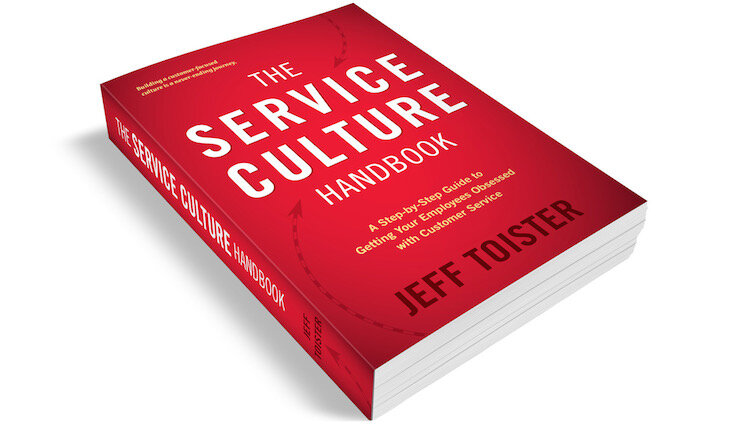A customer walked into Nordstrom with two tires and asked for a refund.
Nordstrom doesn't sell tires, so the customer clearly didn't buy the tires from that store. Yet the associate gave the customer a refund anyway.
The story became a legend.
You need legendary stories of your own if you want to deliver legendary customer service. This guide will show you three things:
What makes a great customer service story.
Where to gather your own legendary tales.
How to use stories to inspire your team.
We'll also break down the Nordstrom tire story to see why it works so well at Nordstrom, but probably won't work for your employees.
Photo credit: Mike Mozart
What makes a great customer service story?
Legendary customer service stories help employees understand the service culture. They connect at an emotional level to help explain the customer service vision and inspire action.
Legendary stories have three characteristics:
About your company
An example of the vision
Authentic
Let's see how the Nordstrom tire story fits.
First, it's about Nordstrom.
The tire story is unusual, but nearly every Nordstrom associate can relate to serving a customer who needed help with a return or an unusual request.
Second, the story exemplifies Nordstrom's specific customer service vision:
Use good judgement in all situations.
The Nordstrom tire story is really a story about an associate following the vision.
A different store occupied the building before Nordstrom moved in. And that store did sell tires. The customer explained to the Nordstrom associate that he was told he could return the tires if they didn't work out.
The associate believed the customer's story. His good judgment told him he should try to help the customer.
The associate decided to call a nearby Firestone tire dealer to get the estimated value of the tires. He then gave the customer a cash refund for that amount.
The third characteristic of a great story is it has to be authentic.
What makes the Nordstrom tire story so great is it actually happened. I'll admit, I once doubted the authenticity, until I heard this episode of the Nordstrom podcast.
In the episode, Nordstrom president, Pete Nordstrom, interviewed Craig Trounce, the associate who gave the customer a refund for his tires. Trounce goes into detail about what happened and why he made the decision, which makes the story even more impactful.
Warning: the Nordstrom tire story only works at Nordstrom. It wouldn’t fit the three characteristics if you applied it to your organization. You'll need to gather your own legendary tales to inspire your team.
Where to gather legendary tales
When I advise customer service teams, they often get hung up on finding extreme examples like the Nordstrom tire story. You don't need extreme. Your story just has to be compelling.
Here are a few places to look for examples.
Team Meetings
Ask your employees for examples of things they've done or observed others doing that fit the customer service vision.
I asked a group of customer service reps at a medical device company for examples and learned how an agent went the extra mile to help save a patient's life.
Observations
Spend time observing employees interact with customers and you're bound to find some great stories.
I visited an apartment community to do research before I gave a keynote at the management company's leadership retreat. It didn't take me long to spot a great story.
An employee was cheerfully greeted by several dogs (and the residents who owned them). The employee had made friends with the dogs and residents by always carrying treats for the dogs.
Here's my step-by-step guide to performance observations: Observation Guide
Customer Feedback
You often learn about legendary stories directly from customers. They share tales via conversations, surveys, and even emails or letters.
All you have to do is listen.
I was helping a university's parking department analyze its customer service survey results when an unusual trend emerged. Several employees were repeatedly mentioned by happy customers.
A little more digging revealed these employees went out of their way to create personal connections with the people they served. They got to know people by name and customers got to know them as well. Each one became a legendary example.
Get help analyzing your own surveys: Customer Survey Resources
How to use stories to inspire your team
Customer-focused teams talk about customer service a lot. The Nordstrom tire story is so compelling because employees have heard it many times. They know the story themselves and they use it to inspire their own actions.
Think of situations where you discuss customer service with your team. That's a great time to share a legendary story.
New hire training
Ongoing training
Team meetings
One-on-one coaching
Team communication
Many Nordstrom stores have a sign near the employee entrance reminding associates of the tire story. It's another way to remind employees about the customer service vision, "Use good judgment in all situations."
Take Action
Remember, your stories don't need to be over-the-top to become legendary. The stories just need to help explain your service culture.
You can start building your legend today. Gather stories that fit the three characteristics:
About your company
An example of the vision
Authentic
Once you have a few legendary stories, start sharing them with your team.
















